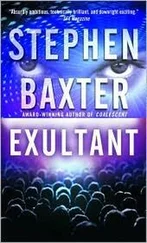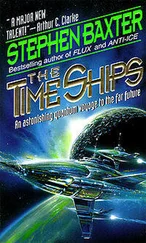That night, she had trouble sleeping. She couldn’t get the image of those bright-button village kids out of her head. Mute inglorious Miltons, indeed.
On the way here Emma had done some more digging into the Milton Foundation.
Milton turned out to be a shadowy coalition of commercial, philanthropic, and religious groups, particularly Christian. The Foundation was international, and its Schools had been set up in many countries, including the United States. The children were in general separated from their families and homes and spirited away to a School perhaps half a world away. In fact — so some journalists alleged — children were being moved from School to School, even between countries, making monitoring even more difficult.
Not everybody welcomed the arrival of a School full of children labeled as geniuses. Nobody likes a smart-ass. In some places the Schools and children had actually come under physical attack, and there were rumors of one murder; the Foundation, she had learned, spent a remarkable amount of its money on security, and almost as much on public relations.
And there were darker stories still of what went on inside the Schools.
Emma’s doubts about associating Bootstrap with the initiative continued to grow. But she knew that until she came up with a stronger case for pulling back she was going to be overruled by Malenfant himself.
She wished she understood Cornelius and his shadowy associates better. She didn’t yet grasp how this program fitted in with Eschatology’s wider agenda: the end of the world, messages from the future. She had the intuition that what they were seeking wasn’t just smart children, but something much more strange.
And she wondered if that was exactly what she had found here in Africa.
She stepped onto her balcony.
Looking up at the stars, Michael’s stars, she could tell she was far from home. She recognized Ursa Major. But the familiar childhood panhandle shape was upside down, and its pointer stars were pointing below the horizon. And when the Moon rose, it climbed straight up into the sky, heading for a point somewhere over her head. Not only that, it was tipped up sideways; the Man in the Moon’s forehead was pointing north.
But it wasn’t the Moon that was tipped; it was herself. She had flown around the belly of the planet, which was thereby proven to be round. It was a startling thought.
I should travel more, she thought.
How was it possible for a kid on the fringe of the African bush to figure out so much fundamental physics?
If she and Malenfant had had kids, she supposed, she might have a better instinct on how to handle this situation. But they hadn’t, and the whole world of children, damaged or super-intelligent or otherwise, was a mystery to her.
On a whim, she unfolded her softscreen and looked up the properties of gold.
She learned that relativistic effects, the strange and subtle effects of very high speeds and energies, determined the color of gold.
In light elements, electrons orbited the nuclei of atoms at a few hundred miles per second — fast, but only a few percent of the speed of light. But in elements with massive nuclei — like uranium, lead, or gold — the electrons were dragged around at a large fraction of the speed of light, and relativity effects became important.
Most metals had a silvery luster. But not gold. And that was because of the strange high-speed phenomena Michael seemed intuitively to understand: relativity time-dilation effects operating deep within the gold atoms themselves.
She took off her ring and put it on the balcony before her. The stars were reflected in its scuffed surface. She wondered what Michael had seen as he stared into her ring.
When she got back to the States she discovered that Malenfant had found out about the accelerator project clearances and had holed himself up at Fermilab — where Dan Ystebo claimed, almost immediately, to have results.
She flew straight on to Illinois.
New York Times:
From an unpromising grade school in a run-down neighborhood at the heart of New York City has come what may prove to be the most striking example yet of the recent wave of brilliant children ‹background›.
A group of children here — average age just eight — seem to have come up with a proof of the mathematical statement called the Riemann hypothesis. This is concerned with the distribution of prime numbers ‹click for detail›. The hypothesis is something that generations of professional mathematicians have failed to crack — and yet it has opened up to a bunch of children, in a few weeks of their working together at the school in their lunch breaks.
The result has electrified, terrified, astonished, according to temperament. The children at this New York school may the first to attract serious attention from the academic and business communities and the federal government as a potential national resource.
And they have also become the first to require round-the-clock armed guards.
The news of this obscure mathematical result has crystallized the fear some people seem to be forming over these superkids. Police were forced to head off a mob that marched out to the school: angry, scared, evidently with ugly intent, a mob that had even included some of the parents and older brothers and sisters of the children themselves.
Emma Stoney:
Fermilab turned out to be thirty-five miles west of Chicago, close to a town called Batavia. From the air Illinois was a vast emptiness studded by lost-looking little towns. Disoriented, jet-lagged, she glimpsed Fermilab itself, the perfect circle of the collider ring set amid green tallgrass prairie, presumably replanted.
She wasn’t sure what she had expected of a superscience lab like this. Something futuristic, maybe: a city of glass and platinum where steely eyed men in white suits made careful notes on super-advanced softscreens. What she found was an oddly parklike campus littered by giant constructions, like the abandoned toys of some monster child.
This artificial landscape, the huge constructions, made a startling contrast with the bare bleakness of Africa. But the concrete was cracked and streaked with rust and mold. This was an aging, underfunded place, she thought, a lingering dream of a more expansive age.
But here and there she saw the sleek, cool curves of the Teva-tron itself, a three-mile-wide torus within which subatomic particles were accelerated to a substantial fraction of the speed of light.
The main hall was called Wilson Hall, a surreal sixteen-story sculpture of two towers connected by crisscrossing bridges. Inside there was a gigantic atrium stocked with trees and shrubs. Malenfant was waiting for her there. There were black stress rings around his eyes, but he was agitated, excited. “What do you think? Quite a place.”
“It’s a technocrat’s wet dream.”
“They rebuilt the prairie afterward, you know. They even have a herd of buffalo here.”
“We’re not here for the buffalo, Malenfant. Shall we get this over with?”
He grinned. “Wait until you see what we got here, babe.”
He led her deeper into the complex, and into the cramped and jumbled technical areas. She found herself squirming past gigantic, unrecognizable pieces of apparatus. There were steel racks everywhere, crammed with badly packed electronic instrumentation, and cable bunches over the floor, walls, and ceilings; in some places the cables were bridged by little wooden ladders. There was a smell of oil, shaved metal, cut wood, cleaning solvents, and insulation, all overlaid by a constant, clamoring, metallic noise. There was none of the controlled cool and order she’d expected.
Malenfant brought her to what he called the muon laboratory. This was some way away from the accelerator ring itself; it seemed that beams of high-speed protons were drawn off from the ring and impacted into targets here.
Читать дальше
Конец ознакомительного отрывка
Купить книгу












